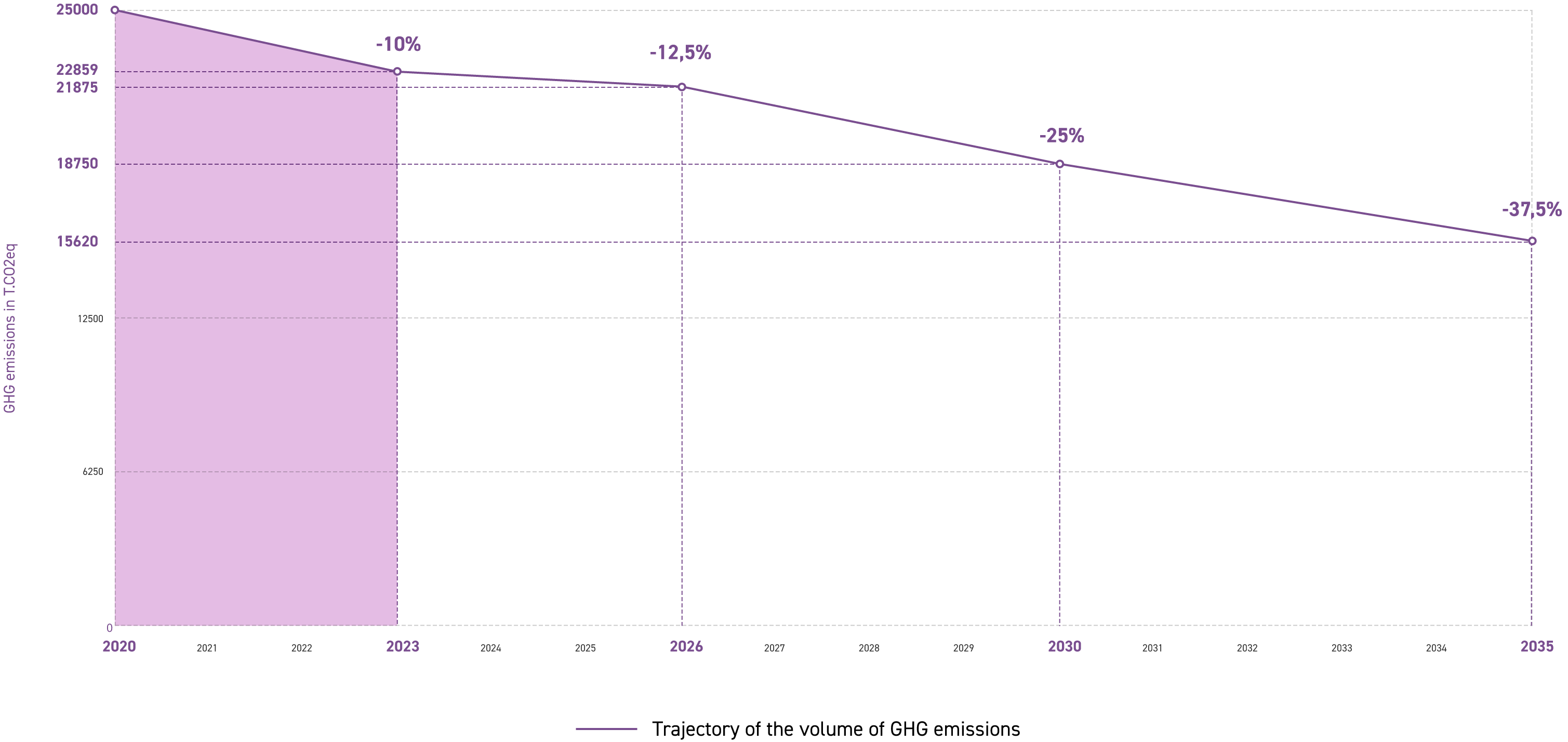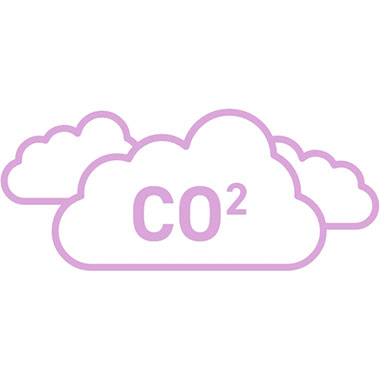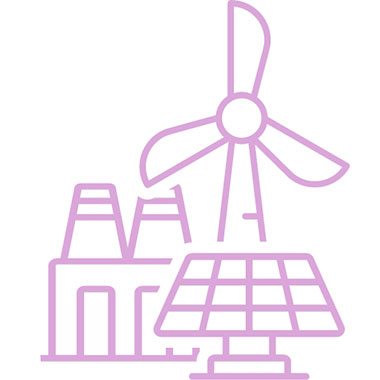Carbon Footprint
What about our carbon emissions?
22,859 tons of CO2 emissions were recorded for 2023, compared to 25,424 tons of CO2 emissions in 2019.
For the audit, OXBOW modified the categorization of its CO2 emissions by dividing the entire collections (SUMMER and WINTER 2023) into two ranges – The ECO Range and the CONVENTIONAL Range.
22859 | tons of CO2e |
A reduction of 10% vs 2019 (25424 T.CO2)
12 | kg of CO2e per unit |
A reduction of 14% vs 2019 (14kg CO2e)
THE ECO RANGE
The ECO range includes products made from at least 70% bio-based raw materials. It also includes products manufactured in Europe and in France.
The bio-based materials are: organic cotton, Tencel, Modal, Yulex®, recycled polyester (Repreve®), recycled fibers, and other upcycled materials.
THE CONVENTIONAL RANGE
Products made from conventional and non-bio-based materials.
77% of emissions
come from the CONVENTIONAL RANGE
Which product categories emit the most GHGs?
The category that emits the most GHGs is the conventional range. The most emission-intensive material remains cotton, accounting for nearly 65% of units sold and 45% of total GHG emissions.
These emissions are primarily linked to two factors: the production of raw materials (cultivation, harvesting, transportation) and production (in particular the production of electricity from fossil fuels). For the next financial year, the production of ECO and CONV materials and the energy mix of our suppliers and their involvement in production will need to be assessed.
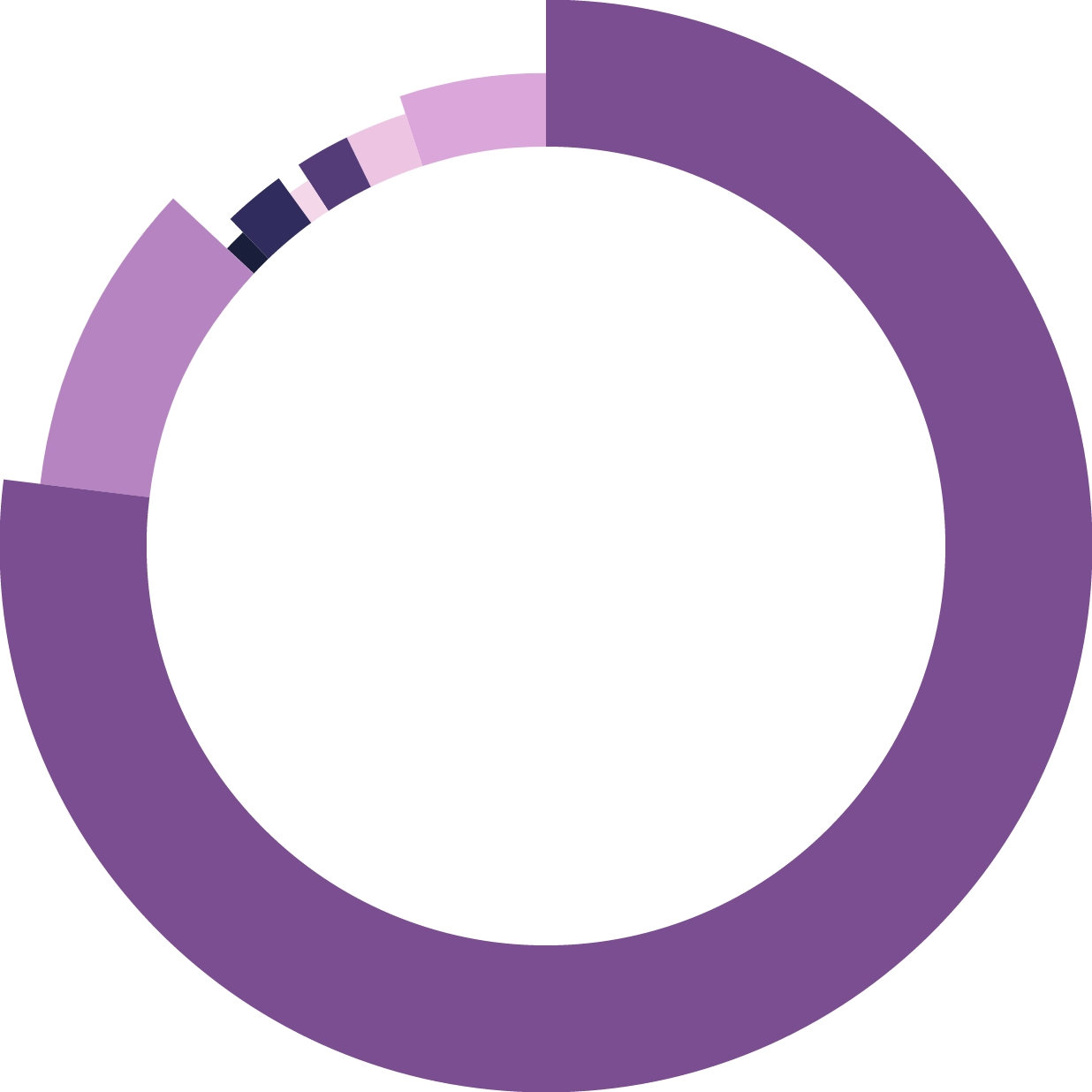
GHG Emissions by Category
| CONVENTIONAL Range | 77% |
| ECO Range | 10% |
| Inputs | 5% |
| Usage | 2% |
| Transportation | 2% |
| Freight | 2% |
| End of life | 1% |
| Capital goods | 1% |
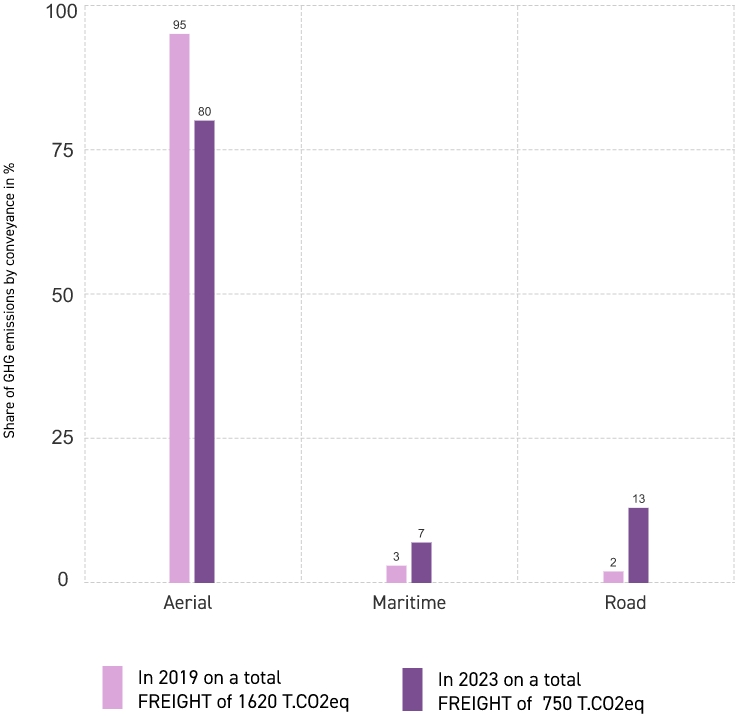
Reduction of AIR FREIGHT by 75% VS. 2019
The significant reduction in AIR FREIGHT resulted in a 55% decrease in CO2 emissions linked to TOTAL FREIGHT! A considerable figure that confirms OXBOW’s Climate Strategy for freight transport.
Although air freight is the least used mode of transport, it still accounts for almost 80% of total freight GHG emissions, which is why it is so important to reduce its use.
THE 2023 CARBON FOOTPRINT CONFIRMS THAT OXBOW HAS MET ITS INITIAL TARGETS SET IN 2020!
OUR GOAL REMAINS THE SAME AS IN 2020:
A 12.5% reduction in our total volume of GHG emissions. That is a reduction of 2.5% per year between now and 2026. This is to keep global warming below 2°C.
This approach is largely based on the Science Based Targets (SBTi) initiative, which aims to encourage companies to define reduction targets in line with scientific recommendations.
Our goals aim to reduce annual GHG emissions by 2.5% per year by 2026 to keep global warming below 2°C.
The reduction trajectory up to 2035 has been established and is directly linked to the W2C trajectory (limiting global warming to below 2°C).
IMPACT OF THE CARBON STRATEGY ON GHG EMISSIONS
